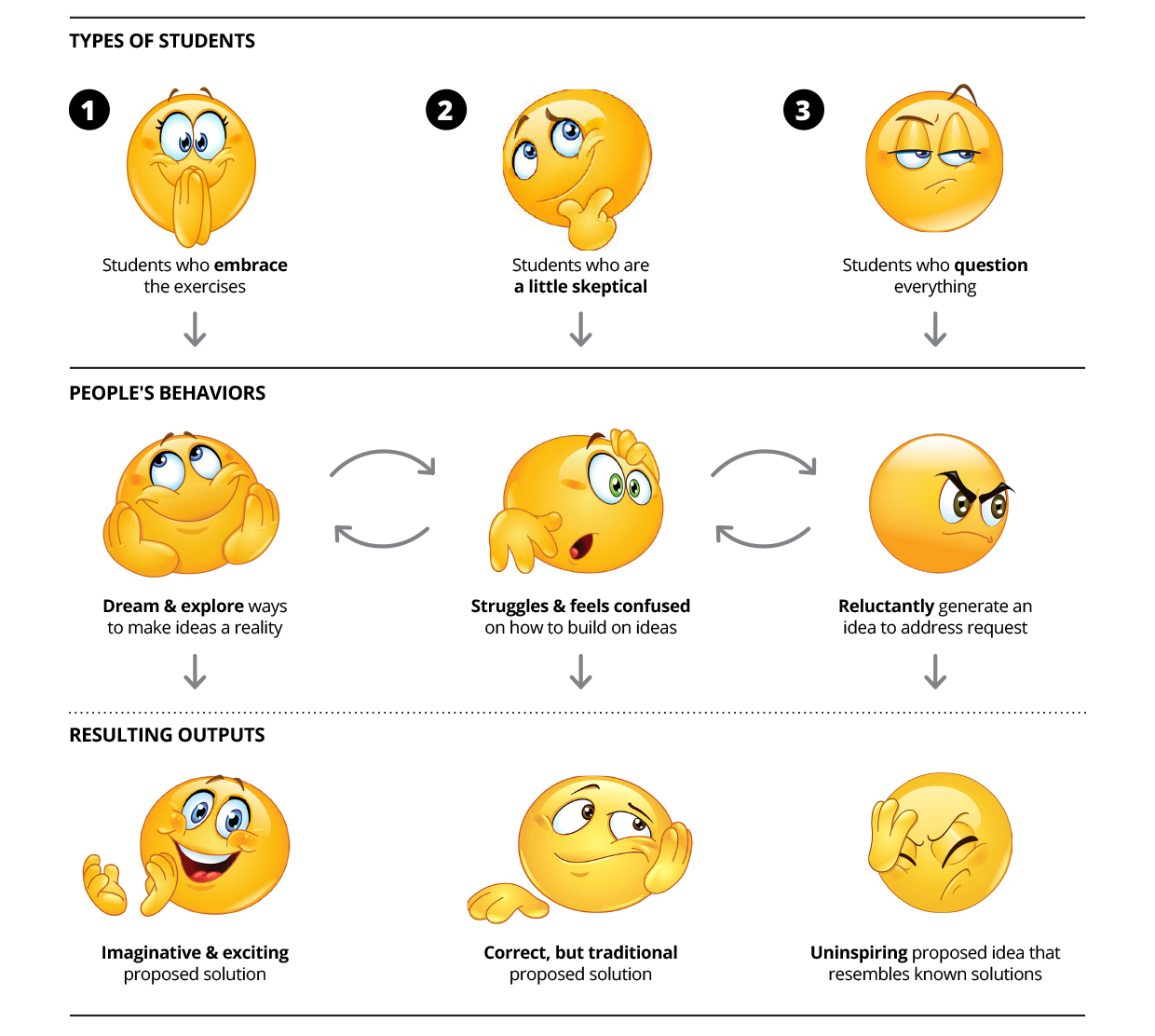
Teaching people how to re-learn to imagine and engage in creative thinking has been a learning experience in many ways. Particularly, I have learned how to pay attention to people’s attitudes and behaviors when given a creative task. Similarly, from my college experiences, I have identified three main types of students, based on their motivation to be in the class, and attitude towards the exercises:
- Students who embrace the exercises and are happy to feel uncomfortable while experiencing unknown situations
- Students who are a little less receptive and hence frequently complain about the types of exercises, but go along with them
- Students that question the value and relevance of everything we do in class – some of these students do not complete the course because they feel really uncomfortable with the exercises, and the ambiguity of doing things differently
Interestingly, these in-class behaviors could also be used to understand how people tend to behave towards applied imagination and respond to a given challenge in everyday life. People could be broadly clustered into three groups:
Explorers: People who enjoy generating imaginative ideas and work to make them a reality. These people take imaginative thinking seriously and embrace their ideas. They are not discouraged by constrains, the impractical nature of imaginative ideas, or any unconventional aspects. Rather, they reflect and think about ways to work around these perceived barriers to grow their ideas and make them tangible. Research, experimentation, elaboration, and trial and error are common steps. The resulting outputs are exciting and intriguing, as they present unseen views.
Strugglers: People who at first enjoy generating imaginative ideas, but then struggle to develop them further. These people get frustrated when having to deal with constraints and also get easily discouraged by the impractical nature of imaginative ideas. These feelings manifest as inability to further expand on initial ideas, add details, or make them tangible. They soon decide to abandon initial ideas, despite their potential, and generate “safer” alternatives. The resulting outputs are flat, often resembling existing solutions.
However, if they are motivated, Strugglers would push themselves and take on the challenge, becoming Explorers. In contrast, if they are not motivated, they would abandon any further work on the idea, and reluctantly complete the task.
Reluctants: People who find extremely hard to generate imaginative ideas and prefer to come up with any idea to address the request. These people do not see the value in imaginative thinking and judge related challenges. Consequently, they experience mental blocks, as they do not see the point of divergent thinking, associative thinking tasks, or any other similar exercises. They do not spend time trying to break assumptions or exploring possibilities; rather they work with the first idea that comes to mind or make small changes on an existing solution. The final outputs are uninspiring and irrelevant to the initial challenge.
These three behaviors have not been tested yet and more work is needed to validate them. However, they are a first step towards better understanding people’s mental blocks and barriers to engage with applied imagination. By finding ways to add clarity to Strugglers, support Reluctants in identifying their personal barriers, or leveraging on Explorers‘s curiosity, we can contribute to a more creative society.
You must be logged in to post a comment.